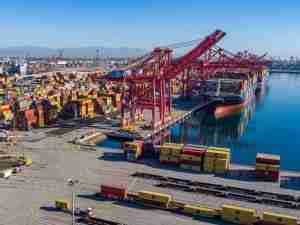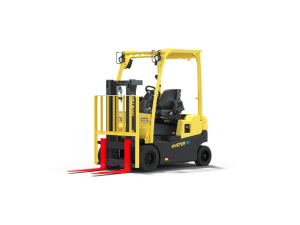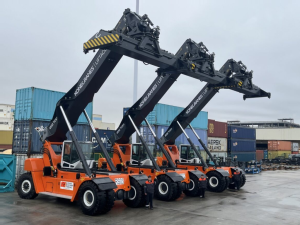It was the first cargo to arrive at the Port of Halifax Richmond Multipurpose Terminal, an engineering marvel in its own right after a two-year, $67 million rebuild.
“The arrival of the cranes is quite a spectacle that illustrates the magnitude of what is unfolding at Irving Shipbuilding,” George Malec, vice-president of business development and operations for the authority, said. “It’s a wonderful coincidence the cranes are arriving just as the rebuild of the terminal nears completion.” There are a few finishing touches to be completed at the terminal after the reconstruction program to allow the facility to accommodate large ships with oversized cargo items like specialty cranes, wind turbines or other components for megaprojects.
Malec said the terminal will handle break-bulk cargo—items unsuitable for shipping containers—and, with its 75,000-square-foot storage shed, will augment other Port of Halifax infrastructure such as the Fairview Cove and South End container terminals and cruise ship facilities at the Halifax Seaport. The massive cranes from Konecranes (HEX : KCR1V ) are destined for the Halifax Shipyard next to the terminal. They will be critical components of the Ultra Hall Production Building, currently under construction. Each crane weighs about 250 tons and spans about the full height and width of the new production building, which is about 47 meters tall and 55 meters wide.
“The entire installation process will take approximately three weeks,” said Deborah Page, spokeswoman for Irving Shipbuilding. “They will be used to move large blocks and megablocks that will form the vessels.”
She said the bridge cranes, each with a lift capacity of up to 200 tons, are part of Irving Shipbuilding’s $300 million investment to prepare the shipyard for the building of Canada’s new naval combat vessels, starting in September 2015. Components of the cranes will be assembled at the site, hoisted up more than 47 meters, and then lowered into place through an opening in the roof of the production building.
Halifax Shipyard Receives a Huge Delivery of Overhead Cranes from Konecranes
By: Marketwired | Oct 20 2014 at 08:03 AM | Ports & Terminals









